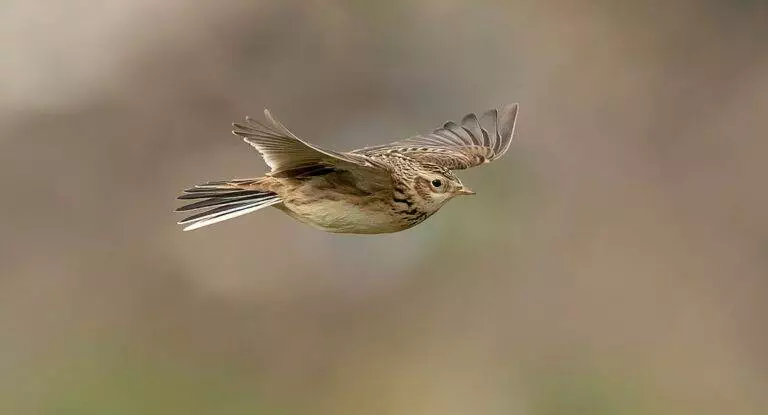Percy Bysshe Shelley’s “To a Skylark” is a masterpiece of Romantic poetry that celebrates the beauty and transcendence of nature through the metaphor of a singing skylark. This article will delve deep into the poem’s themes, structure, and significance, offering a comprehensive analysis that will enhance your appreciation of this timeless work.
Table of Contents
The Context and Inspiration
Shelley wrote “To a Skylark” in 1820 while living in Italy. The poem was inspired by an evening walk with his wife, Mary Shelley, during which they heard the beautiful song of a skylark. This experience moved Shelley to compose one of his most famous and beloved poems.
The role of nature in Romantic poetry was paramount, and “To a Skylark” exemplifies this fascination with the natural world. Shelley, like many Romantic poets, saw nature as a source of inspiration, wisdom, and transcendental truth.
Structure and Form
“To a Skylark” consists of 21 stanzas, each following a consistent pattern:
- Five lines per stanza
- A rhyme scheme of ABABB
- The first four lines in trochaic trimeter
- The final line of each stanza in iambic hexameter
This unique structure allows Shelley to create a rhythmic flow that mimics the skylark’s flight and song, alternating between short, quick lines and a longer, more melodious final line in each stanza.
Themes and Imagery
The Unseen Singer
One of the poem’s central themes is the idea of the unseen yet powerfully present artist. Shelley describes the skylark as:
"Hail to thee, blithe Spirit!
Bird thou never wert,
That from Heaven, or near it,
Pourest thy full heart
In profuse strains of unpremeditated art."The poet portrays the skylark as more than just a bird; it becomes a symbol of pure, spontaneous artistic expression. This theme resonates with the Romantic ideal of the artist as a conduit for natural inspiration.
Joy and Melancholy
Shelley contrasts the skylark’s joyful song with human melancholy:
"We look before and after,
And pine for what is not:
Our sincerest laughter
With some pain is fraught;
Our sweetest songs are those that tell of saddest thought."This juxtaposition highlights the Romantic notion of the bitter-sweet nature of human existence and the desire to transcend earthly sorrows through art and nature.
Nature’s Superiority
Throughout the poem, Shelley elevates the skylark’s song above human creations:
"Better than all measures
Of delightful sound,
Better than all treasures
That in books are found,
Thy skill to poet were, thou scorner of the ground!"This theme reflects the Romantic belief in nature’s superiority over human artifice and the desire to learn from and emulate the natural world.

Literary Devices
Shelley employs a rich array of literary devices to bring his ode to life:
- Metaphor: The skylark is compared to various entities, including a “blithe Spirit,” a “cloud of fire,” and a “star of Heaven.”
- Personification: The bird is given human qualities, such as the ability to teach and inspire.
- Alliteration: “Our sweetest songs are those that tell of saddest thought.”
- Apostrophe: The entire poem is an address to the skylark, an absent entity.
- Imagery: Vivid descriptions appeal to multiple senses, creating a rich, immersive experience for the reader.
The Poem’s Significance and Legacy
“To a Skylark” is considered one of Shelley’s finest works and a quintessential example of Romantic poetry. Its exploration of nature, art, and the human condition continues to resonate with readers today.
The poem has influenced numerous writers and artists, including:
- Thomas Hardy, who references it in his novel “Tess of the d’Urbervilles”
- Vladimir Nabokov, who alludes to it in “Lolita”
- The band The Decemberists, who named their album “Her Majesty the Decemberists” after a line from the poem
Contemporary Relevance
In our modern world, often disconnected from nature, “To a Skylark” serves as a poignant reminder of the beauty and inspiration that can be found in the natural world. It encourages readers to:
- Seek moments of connection with nature
- Find joy in simple, everyday experiences
- Appreciate the power of art and music to elevate the human spirit
- Reflect on the relationship between joy and sorrow in human experience
Conclusion
Percy Bysshe Shelley’s “To a Skylark” stands as a testament to the power of nature to inspire and elevate the human spirit. Through its intricate structure, vivid imagery, and profound themes, the poem continues to captivate readers, offering insights into the Romantic worldview and the enduring relationship between humans and the natural world.
As we face contemporary challenges such as climate change and urban development, Shelley’s ode reminds us of the irreplaceable value of nature and its capacity to inspire, heal, and transform. By revisiting works like “To a Skylark,” we can reconnect with the wonder and beauty of the natural world, finding in it a source of solace, inspiration, and renewal.
Further Reading
For those interested in exploring more Romantic poetry and its themes, consider these related works:
- John Keats’ “Ode to a Nightingale”
- William Wordsworth’s “I Wandered Lonely as a Cloud”
- Samuel Taylor Coleridge’s “The Rime of the Ancient Mariner”
These poems, along with “To a Skylark,” offer a comprehensive view of the Romantic poets’ engagement with nature, imagination, and the human experience.



1 Comment
Pingback: Ozymandias by Percy Bysshe Shelley: A Comprehensive Analysis - LitGram by MukeshRishit